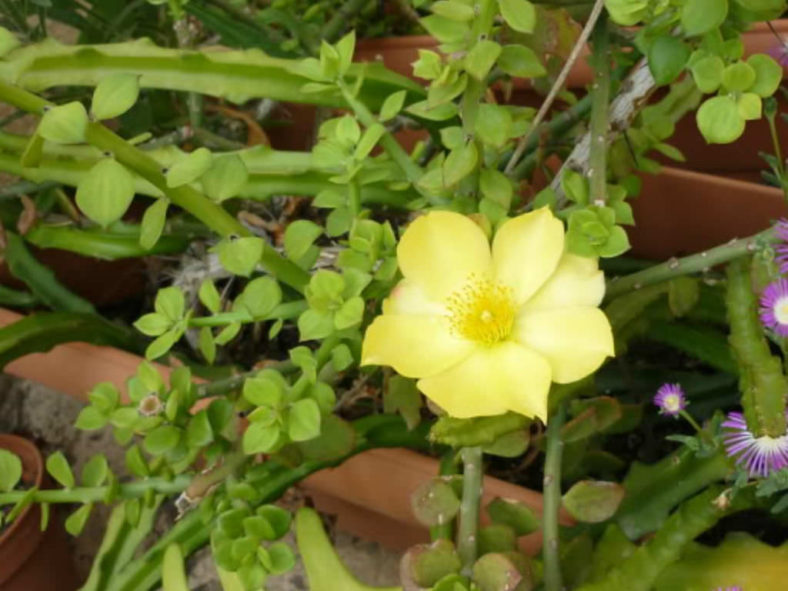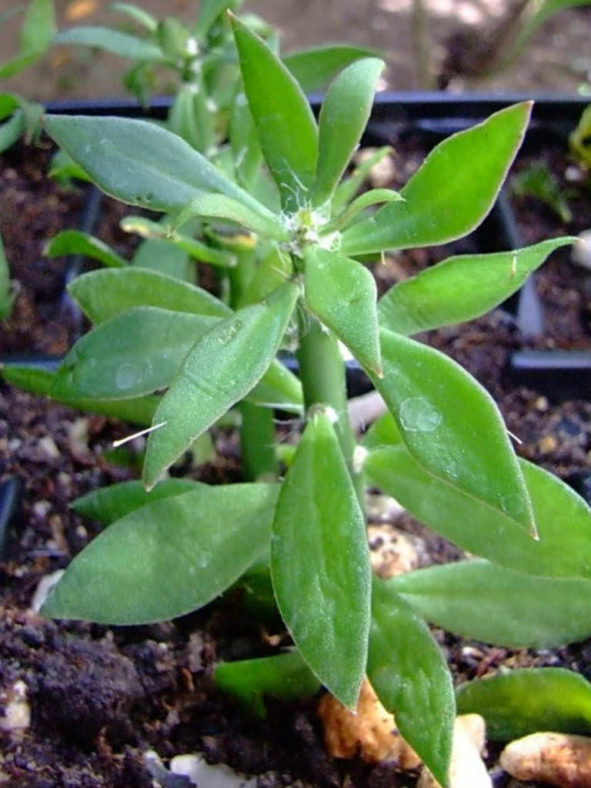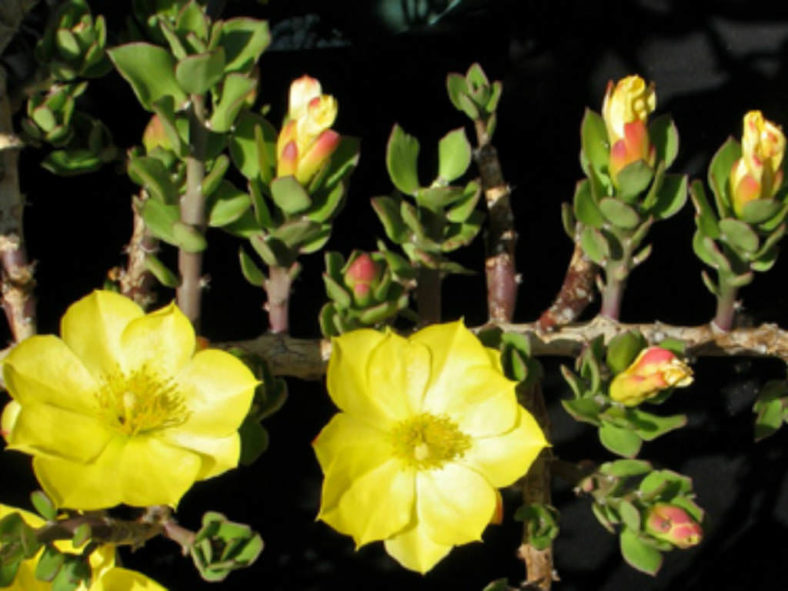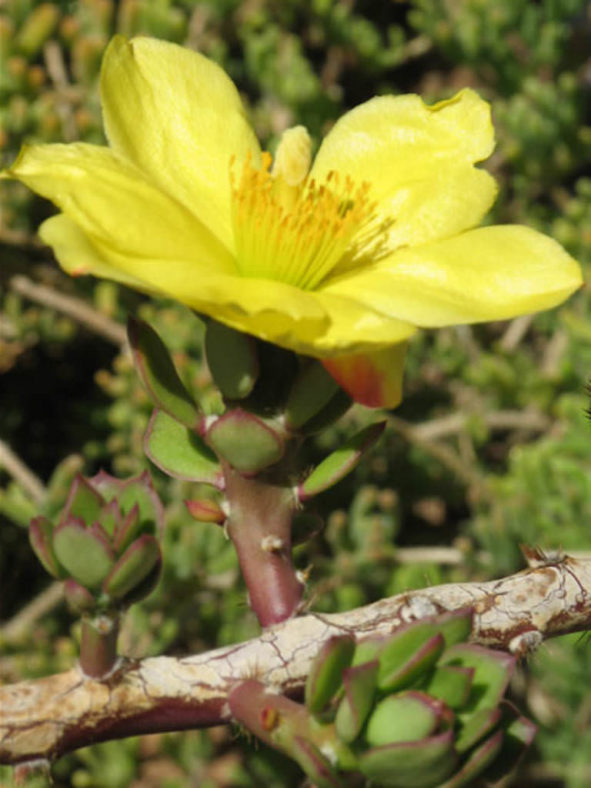Scientific Name
Pereskiopsis diguetii (F. A. C. Weber) Britton & Rose
Common Name(s)
Alfilerillo, Cola De Diablo, Nopaleta, Patilon, Tasajillo
Synonym(s)
Grusonia diguetii, Opuntia diguetii, Pereskia crassicaulis, Pereskia spathulata, Pereskiopsis diguetii subsp. spathulata, Pereskiopsis spathulata
Scientific Classification
Family: Cactaceae
Subfamily: Opuntioideae
Tribe: Cylindropuntieae
Genus: Pereskiopsis
Etymology
The specific epithet "diguetii" (pronounced "dee-GWEE-tee-eye") honors Léon Diguet (1859-1926), a French naturalist who collected the specimens on which Frédéric Albert Constantin Weber based his description.
Origin
Pereskiopsis diguetii is native to Mexico.
Description
Pereskiopsis diguetii, also known as Pereskiopsis spathulata, is a unique, densely shrubby cactus commonly used for grafting seedlings of other slow-growing genera such as Lophophora, Astrophytum, and Ariocarpus. It can grow up to 6.5 feet (2 m) tall, branching from the base, and has woolly areoles that bear 1 or 2 whitish spines that reach a length of 1 inch (2.5 cm). The leaves are elliptic-ovate, long-pointed, and wedge-shaped at the base, measuring up to 2 inches (5 cm) in length.
The flowers are yellow and can reach a diameter of 3 inches (7.5 cm). The fruits are orange to yellow, sometimes red, and can grow up to 2.8 inches (7 cm) long and 0.6 inches (1.5 cm) in diameter.

How to Grow and Care for Pereskiopsis diguetii
Hardiness: USDA hardiness zones 10b to 11b: from 35°F (1.7°C) to 50°F (10°C).
As with every cactus, a lack of light will harm them if you expect growth and continue to water them. You will wait a long time if you do not have an artificial light source and humidity. Pereskiopsis lives in very tropical, wet, and humid regions of Central and South America. This is easy to recreate with your grow light and indoor greenhouse setup. However, be sure to allow for air circulation. This is one of the top killers of Pereskiopsis, behind overwatering. If you have an indoor greenhouse, you can easily do this by opening the tent several hours a day and choosing one day a week when it is open all day. You should have two angles for air circulation. No artificial fans are needed, but they can be helpful.
These cacti have the unique property of wanting more water. Don't make the common mistake, though; most cacti would prefer to be watered more often. However, the soil, heat, and light you have are probably not enough to accommodate them. Even in their natural habitat, cacti prefer more water than they receive.
See more at How to Grow and Care for Pereskiopsis.
Links
- Back to genus Pereskiopsis
- Succupedia: Browse succulents by Scientific Name, Common Name, Genus, Family, USDA Hardiness Zone, Origin, or cacti by Genus
Photo Gallery
Click on a photo to see a larger version.


